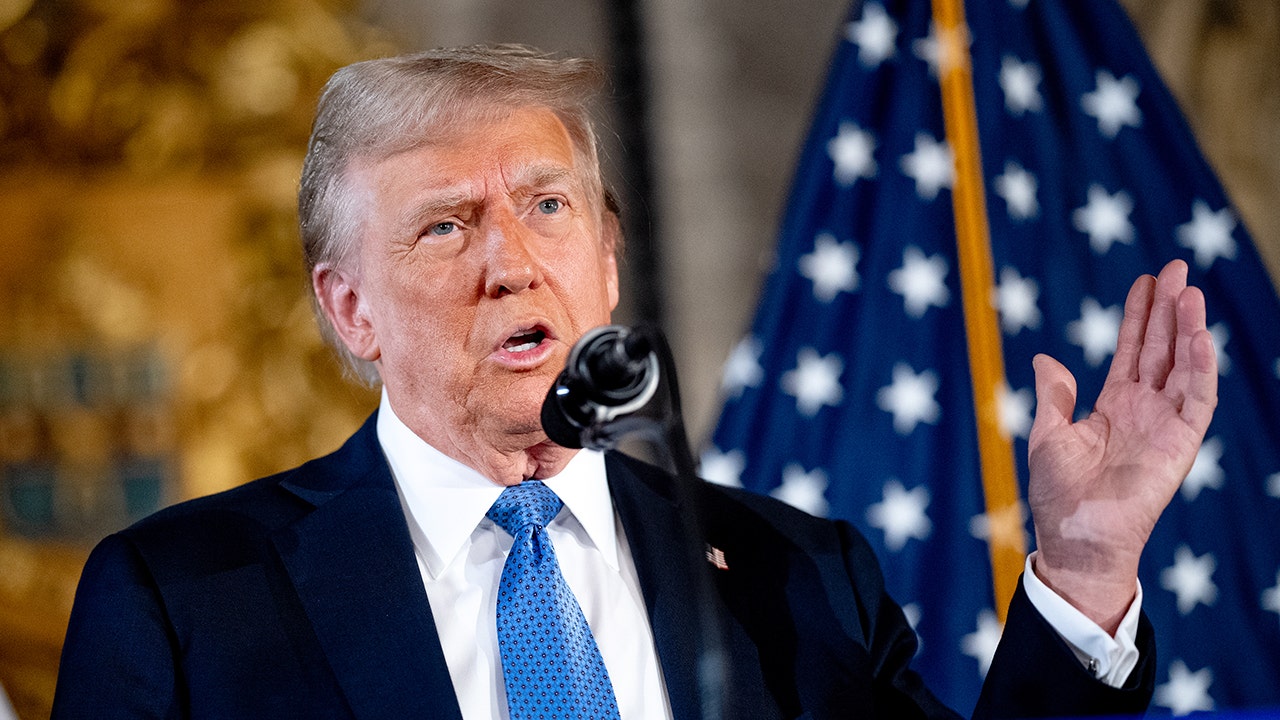Finance
What Will It Take For CEOs To Bring Their Zeal For Comparability In CEO Compensation To Financial Reporting?

NEW YORK, NY – FEBRUARY 15: Mary-Kate Olsen and Ashley Olsen attend the J. Mendel Fall 2012 fashion … [+]
An investor will struggle to even compare the financial performance of archrivals, Coca Cola, and Pepsi. I suggest we ask firm A to report its numbers using the same disclosure practices and accounting policies followed by peer firm B and vice versa.
Accounting rule makers often extol the virtues of comparability between the financial statements of two companies. For instance, the FASB states, “more comparable standards have the potential to reduce costs for both users and preparers of financial statements and make worldwide capital markets more efficient.” The ISSB is understandably even more worried about comparability given the inherent absence of dollars as a common unit of measurement in sustainability reporting: “the provision of rigorous, reliable and comparable sustainability information enables informed investment and economic decisions in the public interest. This approach promotes the proper functioning of capital markets, building trust, resilience, efficiency, transparency, and accountability.”
Coke v/s Pepsi
My friends in the sustainability area usually experience bouts of heartburn about comparability. I am here to assure them that even after decades of regulated financial reporting, we still have a long way to go on the comparability of financial data.
Let’s begin with textbook arch rivals, Coca Cola, and Pepsi. A quick look at their 10Ks for fiscal 2022 tells you that comparability between these two businesses is a non-starter. Why? Coca Cola is essentially a beverage company that sells product in more than 200 products and territories.
Pepsi, on the other hand, is a conglomerate, and reports results for seven different segments: (i) Frito-Lay North America (FLNA), which includes its branded convenient food businesses in the United States and Canada; (ii) Quaker Foods North America (QFNA), which includes their branded convenient food businesses, such as cereal, rice, pasta and other branded food, in the United States and Canada; (iii) PepsiCo Beverages North America (PBNA), which includes beverage businesses in the United States and Canada; (iv) Latin America (LatAm), which includes beverage and convenient food businesses in Latin America; (v) Europe, which includes beverage and convenient food businesses in Europe; (vi) Africa, Middle East and South Asia (AMESA), which includes beverage and convenient food businesses in Africa, the Middle East and South Asia; and (viii) Asia Pacific, Australia and New Zealand and China Region (APAC), which includes beverage and convenient food businesses in Asia Pacific, Australia and New Zealand, and China region.
So, how do I compare the beverage business, aggregated across the world, for Pepsi with that of Coca Cola? Pepsi reports revenue from beverages in its various geographical segments (LatAm, Europe, Amesa, and APAC) but I found nothing in its 10-K about costs and hence profits attributable exclusively to its beverage business.
Perhaps we might have better luck with two relatively similar companies in a somewhat easier to understand business. I was thinking of home improvement retail and Home Depot and Lowes.
Home Depot v/s Lowes
Home Depot’s and Lowe’s numbers are barely comparable for 2022 because they cover different time windows. Home Depot closes its annual books on January 29, 2023, whereas Lowes’, its closest competitor, closed its books on February 3, 2023. Thus, Lowe’s 2022 fiscal year ended February 3, 2023, reported numbers for 53 weeks unlike Home Depot which reports its data for year ended January 29, 2023, for 52 weeks instead. You may laugh this off as a trivial matter, but the average weekly sales of Lowes are a non-trivial $1.5 billion ($79 billion for the year divided by 53 weeks). If you argue that we should simply subtract a week of profit to compare the performance of Home Depot and Lowes, you would have implicitly assumed that all of Lowes’ costs vary with time and sales volume. Do they? Well, that requires deeper work. On top of that, Lowes’ fiscal 2022 data with 53 weeks is not strictly comparable with its own fiscal 2021 and 2020 data presented in the same 10-K covering 52 weeks.
To be fair, Home Depot and Lowes at least report sales for relatively identical segments such as lumber, millwork and so on, unlike Pepsi and Coke. But comparability associated with deeper issues, even for these two relatively simple and closely related businesses, gets complicated. Consider a few examples:
· Cash and cash equivalents: Lowes’ states, “the majority of payments from financial institutions for the settlement of credit card and debt card transactions process within two business days and are classified as cash and cash equivalents.” Home Depot, on the other hand, reports credit card receivables under “receivables,” not cash. This is not a big deal if I knew the dollar number of Lowes’ card receivables so that I can subtract that number out of their reported cash balances, but they don’t seem to disclose that number explicitly.
· Merchandise inventories: From what I can gather, Home Depot relies on the FIFO (first in first out) method of valuing inventory and cost of goods sold. Home Depot uses the “retail” inventory method for around 58% of its inventory and the “cost” method for the remaining 42%. Retail inventory valuation methods involve starting with the retail price of a product from which the average margin on the product is deducted to approximate its cost. Lowes simply states that it uses FIFO and does not mention the use of the “retail” method.
· Revenue:
o Lowes calls out its Canadian revenue clearly ($5 billion) whereas Home Depot prefers to report revenue “outside the US” without telling us how much they sell in Canada and Mexico.
o Lowes recognizes revenue on its protection plans (extended warranty programs) on a straight-line basis over the life of the contract. Home Depot includes the fees it gets from banks that administer Home Depot’s store branded cards in its revenue number. Neither firm appears to disclose the dollar amounts involved so that the investor can compare core revenues of these two businesses related to the sale of products and services.
· Depreciation: Lowes gives us crude indicators of the useful lives of their assets on which their depreciation estimates are based. In particular, they depreciate buildings over a 5–40-year range and equipment over a 2–15-year range. Home Depot reports ranges that are somewhat different: buildings and improvements: 5-45 years, furniture, fixtures, and equipment: 2-20 years and leasehold improvements: 5-45 years. I had written earlier about how opaque these wide ranges of useful lives of assets can be.
But this opens a bigger philosophical concern about comparability. The very idea of comparability assumes that keeping the underlying transaction constant, is the score keeping for that transaction comparable across two companies. What if the underlying transaction itself is different? And how is the investor to distinguish between the two hypotheses: are the underlying transactions different or is the reporting or score keeping different for the same underlying transaction?
· Foreign currency: Both firms state that the use “average foreign currency rates” to report results of operations and cash flows, except neither firm clarifies what average means here: daily average, weekly average, monthly average or what?
Comparability in CEO compensation:
Predictably, Home Depot and Lowes, in their proxy statements, identify one another as peers when they discuss how their CEO’s compensation plans are designed. So do Coca Cola and Pepsi. A prominent compensation consultant is usually hired by the compensation committee to collect data on how peers pay their CEOs and careful benchmarking ensues.
Yet, such enthusiasm for comparability and benchmarking is strangely lacking when it comes to helping investors compare financial performance relative to peers.
What’s a way forward?
Here is my disruptive suggested model to move things forward:
· We ask firm A to identify one closely related publicly traded peer, say firm B.
· We ask firm A to report a “pro forma” income statement and balance sheet whereby firm A reports its numbers using the same disclosure practices and accounting policies as followed by firm B.
· Repeat for firm B and so on.
Otherwise, investors are doomed to constant guesswork and noisy estimates as they try comparing financial performance of peer businesses. I can’t even imagine the difficulties associated with comparing sustainability information across peers.

Finance
The Container Store files for Chapter 11 bankruptcy
Investors in The Container Store (TCSG) have been sent packing as the struggling home goods chain files for bankruptcy.
The retailer filed for Chapter 11 bankruptcy protection late Sunday, Yahoo Finance learned exclusively. The company said in a press release it is doing this in order to refinance its debt to “bolster its financial position, fuel growth initiatives, and drive enhanced long-term profitability.”
For the quarter-ended Sept. 28, 2024, The Container Store listed total liabilities of $836.4 million against $969 million in total assets.
CEO Satish Malhotra — a former Sephora executive who took over atop The Container Store in 2021 — is confident the maneuver will allow the 46-year old company to stick around.
“The Container Store is here to stay,” Malhotra said in a statement, adding that it is taking these necessary steps in order to advance the business, strengthen customer relationships, expand its reach and bolster its capabilities.
It plans to lean into custom space offerings, “which continue to demonstrate strength,” he said.
The bankruptcy process is expected to last several weeks with the reorganization anticipated to happen within 35 days. The bankruptcy does not include the company’s Elfa home goods business in Sweden.
The business will operate as usual across all stores, online and in-home services. The company operates 102 stores across 34 states.
The company says all customer deposits are safe and protected, and vendors will get paid in full. There are no planned layoffs.
There are also no planned store closures, but that may be a possibility in the future as the company goes through the reorganization process.
Chapter 11 allows companies to “renegotiate the terms of their leases to align their store footprint with market realities and business needs,” sources told Yahoo Finance, adding “if they do not achieve meaningful rent reductions, they may be forced to close a select few locations.”
The filing has been expected by industry experts.
Read more: Why Walmart won the 2024 Yahoo Finance Company of the Year award
The Container Store — a chain founded in 1978 that rose to fame for its nifty home organizational goods in the 1990s — was delisted from the New York Stock Exchange on Dec. 9 after it fell below the exchange’s standard to maintain a market cap of $15 million over 30 consecutive trading days.
The company has seen its profits plunge post the home remodeling frenzy fueled by the COVID-19 pandemic and competition picked up from Walmart (WMT), Amazon (AMZN) and Target (TGT). It has been unprofitable for the past two fiscal years, with losses tallying about $10 million for the fiscal year-ended Sept. 28, 2024.
Finance
Personal finance lessons from Warren Buffett’s latest letter

Last Nov. 25, Warren Buffett announced that he would donate a substantial portion of the shares he owned in Berkshire Hathaway to his four family foundations.
In his announcement, he included a letter which contained some important personal finance lessons that we can apply to our own situation.
One of my favorites is his comment that hugely wealthy parents should only leave their children enough so they can do anything but not enough that they can do nothing.
Despite being one of the richest men in the world, Buffett shared that his children only received $10 million each when his wife died. Although $10 million is a lot of money, it’s less than 1% of his wife’s estate.
I am not hugely wealthy, nor do I have $10 million. However, Buffett’s comment about just giving our children enough made me reflect on the importance of also making our children resilient.
Many of us want to make sure that our children will be financially secure by the time we pass away. While there is nothing wrong with this, sometimes we go overboard in making sure that this goal is met.
Article continues after this advertisement
For example, sometimes my husband and I are guilty of overindulging our children.
Article continues after this advertisement
Warren Buffett’s comment reminded me that we should also allow our children to go through difficulties so that they will become resilient and learn how to survive comfortably with less. Aside from letting them know that they shouldn’t expect much in terms of inheritance, this could mean limiting their allowance, allowing them to commute to school when there is no car available, and saying “no” to their request to buy nice and expensive things like the latest top of the line gadgets.
Another thing that we are guilty of (especially if you are Filipino Chinese like me) is thinking that we need to build a successful business so that our children will eventually have a steady source of income and the bragging rights of being their own boss.
Although there is nothing wrong with building a successful business, passing it on to our children should not be a priority. This is because there’s no guarantee that our children will want to run our business. In fact, they might not be equipped to run the business properly. If that is the case, they may end up running our business to the ground. This would put them in a worse position, especially if they were raised to think that they do not have to worry about money because they have a business that will take care of them.
Another personal finance lesson Warren Buffett shared is the importance of being grateful and learning to give back.
In his comments, Warren Buffett acknowledged the role of luck in making him wealthy—being born in the US as a white male in 1930 and living long enough to enjoy the power compounding.
However, he recognized that not everyone is as lucky as he is. Because of this, Buffett and his family are focused on giving back so that others who were given a very short straw at birth would have a better chance at gaining wealth.
Learning how to be grateful is very important. We cannot be truly happy unless we are grateful for what we have. In fact, many people who are rich are unhappy because they constantly compare themselves to others who have something that they don’t.
Meanwhile, giving back is a natural outcome of being grateful. It is also very fulfilling. For example, in my company COL Financial, we believe that everyone deserves to be rich. This is why we actively educate Filipinos on personal finance and the stock market.
Helping Filipinos better manage their hard-earned money is one of the greatest fulfillments of my career as an analyst. In fact, this is one of the reasons why I have stayed as an analyst despite the availability of other higher paying jobs.
Finally, Warren Buffett shared the importance of learning how to say no.
People who are wealthy will always be approached by friends, family and others seeking help. Although giving back is important, there is a limit as to how much we can give. Because of that, we need to learn how to say no, even if it is difficult or unpleasant.
To make it easier for his children to say no, Buffett’s foundations have a “unanimous decision” provision which states that unless all his three children agree, the foundations cannot distribute funds to grant seekers.
Although most of us are not as rich as Buffett, we can also benefit from having an accountability partner to help us say no to requests for help. That person can be our spouse, our sibling, or someone who shares our values and understands that while we want to be generous, our resources are limited. Our accountability partner can also help us decide who we should or should not help which is also a difficult task.
Warren Buffett ended his letter by saying that his children spend more time directly helping others than he has and are financially comfortable but not preoccupied with wealth. Because of that, his late wife would be proud of them and so is he.
As a parent, I’d be happier to have children who grow up to become productive citizens with good values rather than to have children who become very rich but are dishonest and greedy. INQ
Finance
Personal finance guru Dave Ramsey warns over 'mind-blowing' Christmas debt

Personal finance expert Dave Ramsey joined ‘Fox & Friends’ to discuss the Federal Reserve possibly cutting interest rates and how Americans can avoid overspending during the holidays.
Holiday spending is putting a big strain on American wallets and leaving some in debt well past the holiday season; however, personal finance expert Dave Ramsey said ‘mind-blowing’ debt can be avoided.
“The average over the last several years has been that people pay their credit card debt from Christmas into May,” The Ramsey Solutions personality shared during an appearance on “Fox & Friends” on Wednesday. “So it takes them about half the year to come back, and because they don’t plan for Christmas… it sneaks up on them like they move it or something.”
According to a study conducted by Achieve, the average American will spend more than $2,000 for the 2024 holiday season, breaking down the outflow of cash into travel and holiday spending on hosting parties, food, clothing, and other gifts.
STOP OVERSPENDING OVER THE HOLIDAYS AND START THE NEW YEAR OFF FINANCIALLY STRONG
Another recent survey by CouponBirds indicated that parents will spend an average of $461 per child and that 49% of parents will go into debt to pay for this Christmas.
Ramsey Solutions’ Dave Ramsey says “you won’t overspend” if you stick to a Christmas budget. (Getty Images)
The Ramsey Solutions personality balked at the amount of money shelled out for the season while explaining that the holiday should not come as a shock, and that spending for it should be planned out.
“Those numbers are mind-blowing when you look at the averages there. That’s a lot of money going out,” Ramsey added, “all in the name of happiness comes from stuff, and it doesn’t.”
He also weighed in and agreed on advice from fellow expert, Ramsey Solutions personality and daughter Rachel Cruze, who suggested making a list of people to shop for and noting how much to spend on each.
FOX Business’ Lauren Simonetti details the holiday shopping season on ‘Cavuto: Coast to Coast.’
“You know, I’m old, and I met a guy from the North Pole,” the expert joked. “He said ‘make a list and check it twice,’ so Rachel’s right.”
Ramsey followed up by expanding on his daughter’s suggestion: “If you do that, and you put a name beside it, and then you total up those dollar amounts, you have what’s called a Christmas budget.”
“If you stick to that, you won’t overspend,” “The Ramsey Show” host remarked.
National Retail Federation CEO Matt Shay reacts to the latest report that holiday spending is expected to reach $989B this year.
The money guru pointed out what he sees as problematic with the holiday season – not taking a shot at Christmas itself – but referring back to the spending issues.
“The problem with Christmas is not that we enjoy buying gifts for someone else. That’s a wonderful thing,” he reassured. “The problem is we impulse our butts off, and we double up what we spend because the retailers make all their money during this season.”
GET FOX BUSINESS ON THE GO BY CLICKING HERE
Ramsey concluded by advising shoppers to be wary of retailers and to not be ensnared by their marketing strategies.
“They’re great merchandisers,” he warned. “They’re great at putting stuff in front of us that we hadn’t planned to buy.”
READ MORE FROM FOX BUSINESS
Ramsey Solutions personality Jade Warshaw breaks down the latest economic data that shows consumer credit card debt is piling up amid a jump in spending.
-

 Politics1 week ago
Politics1 week agoCanadian premier threatens to cut off energy imports to US if Trump imposes tariff on country
-
/cdn.vox-cdn.com/uploads/chorus_asset/file/25789444/1258459915.jpg)
/cdn.vox-cdn.com/uploads/chorus_asset/file/25789444/1258459915.jpg) Technology1 week ago
Technology1 week agoOpenAI cofounder Ilya Sutskever says the way AI is built is about to change
-

 Politics1 week ago
Politics1 week agoU.S. Supreme Court will decide if oil industry may sue to block California's zero-emissions goal
-
/cdn.vox-cdn.com/uploads/chorus_asset/file/25546252/STK169_Mark_Zuckerburg_CVIRGINIA_D.jpg)
/cdn.vox-cdn.com/uploads/chorus_asset/file/25546252/STK169_Mark_Zuckerburg_CVIRGINIA_D.jpg) Technology1 week ago
Technology1 week agoMeta asks the US government to block OpenAI’s switch to a for-profit
-

 Business1 week ago
Business1 week agoFreddie Freeman's World Series walk-off grand slam baseball sells at auction for $1.56 million
-
/cdn.vox-cdn.com/uploads/chorus_asset/file/23951353/STK043_VRG_Illo_N_Barclay_3_Meta.jpg)
/cdn.vox-cdn.com/uploads/chorus_asset/file/23951353/STK043_VRG_Illo_N_Barclay_3_Meta.jpg) Technology1 week ago
Technology1 week agoMeta’s Instagram boss: who posted something matters more in the AI age
-
News1 week ago
East’s wintry mix could make travel dicey. And yes, that was a tornado in Calif.
-
/cdn.vox-cdn.com/uploads/chorus_asset/file/24924653/236780_Google_AntiTrust_Trial_Custom_Art_CVirginia__0003_1.png)
/cdn.vox-cdn.com/uploads/chorus_asset/file/24924653/236780_Google_AntiTrust_Trial_Custom_Art_CVirginia__0003_1.png) Technology2 days ago
Technology2 days agoGoogle’s counteroffer to the government trying to break it up is unbundling Android apps



















